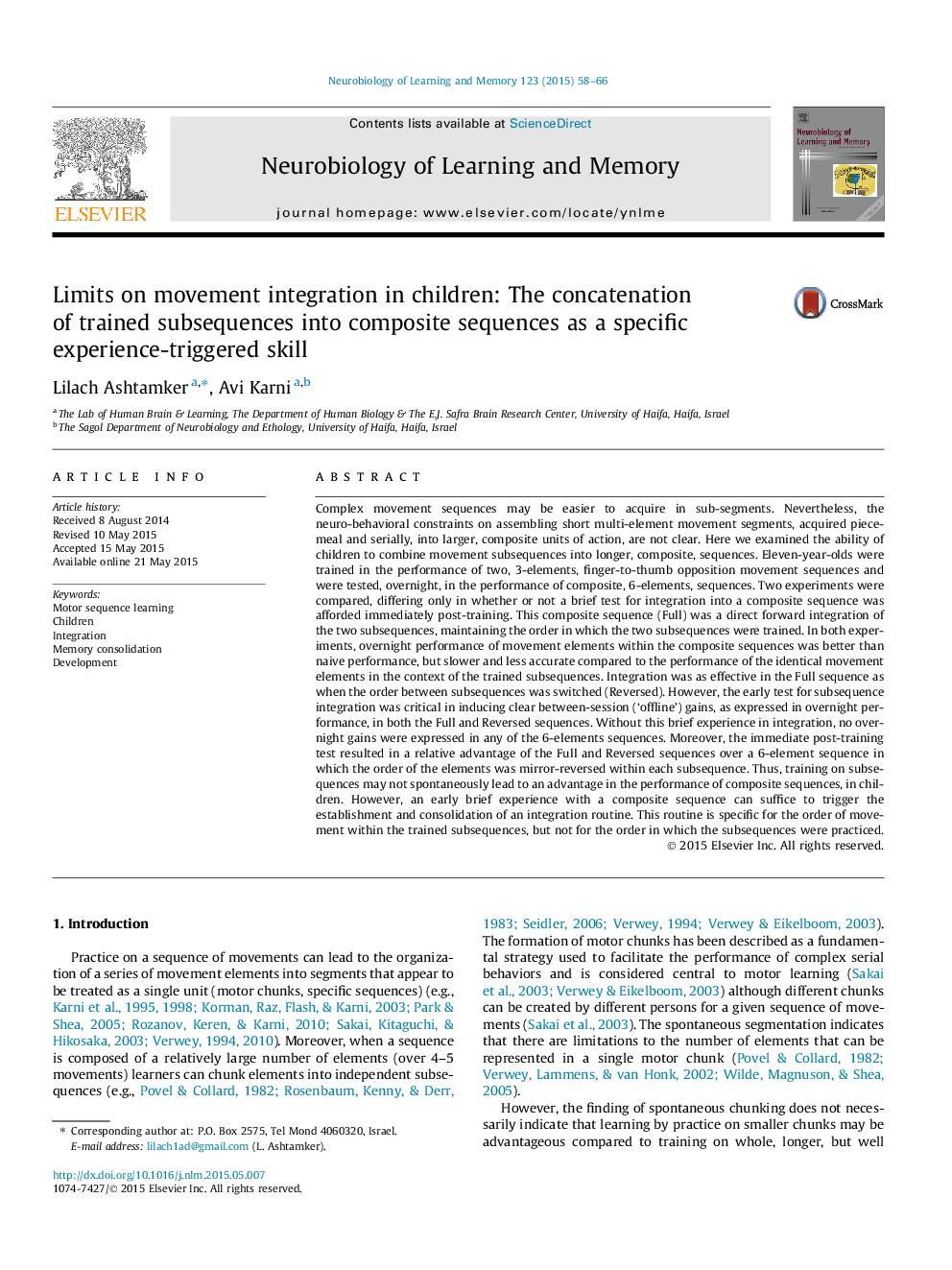| کد مقاله | کد نشریه | سال انتشار | مقاله انگلیسی | نسخه تمام متن |
|---|---|---|---|---|
| 936448 | 1475152 | 2015 | 9 صفحه PDF | دانلود رایگان |
• All children showed robust within- and between-session learning in both trained subsequences.
• Training on subsequences does not spontaneously lead to an advantage in the performance of composite sequences.
• An early brief experience with a composite sequence is sufficient to trigger the consolidation of an integration routine.
• The integration routine is specific for the order of movement within the trained subsequences.
Complex movement sequences may be easier to acquire in sub-segments. Nevertheless, the neuro-behavioral constraints on assembling short multi-element movement segments, acquired piecemeal and serially, into larger, composite units of action, are not clear. Here we examined the ability of children to combine movement subsequences into longer, composite, sequences. Eleven-year-olds were trained in the performance of two, 3-elements, finger-to-thumb opposition movement sequences and were tested, overnight, in the performance of composite, 6-elements, sequences. Two experiments were compared, differing only in whether or not a brief test for integration into a composite sequence was afforded immediately post-training. This composite sequence (Full) was a direct forward integration of the two subsequences, maintaining the order in which the two subsequences were trained. In both experiments, overnight performance of movement elements within the composite sequences was better than naive performance, but slower and less accurate compared to the performance of the identical movement elements in the context of the trained subsequences. Integration was as effective in the Full sequence as when the order between subsequences was switched (Reversed). However, the early test for subsequence integration was critical in inducing clear between-session (‘offline’) gains, as expressed in overnight performance, in both the Full and Reversed sequences. Without this brief experience in integration, no overnight gains were expressed in any of the 6-elements sequences. Moreover, the immediate post-training test resulted in a relative advantage of the Full and Reversed sequences over a 6-element sequence in which the order of the elements was mirror-reversed within each subsequence. Thus, training on subsequences may not spontaneously lead to an advantage in the performance of composite sequences, in children. However, an early brief experience with a composite sequence can suffice to trigger the establishment and consolidation of an integration routine. This routine is specific for the order of movement within the trained subsequences, but not for the order in which the subsequences were practiced.
Journal: Neurobiology of Learning and Memory - Volume 123, September 2015, Pages 58–66
